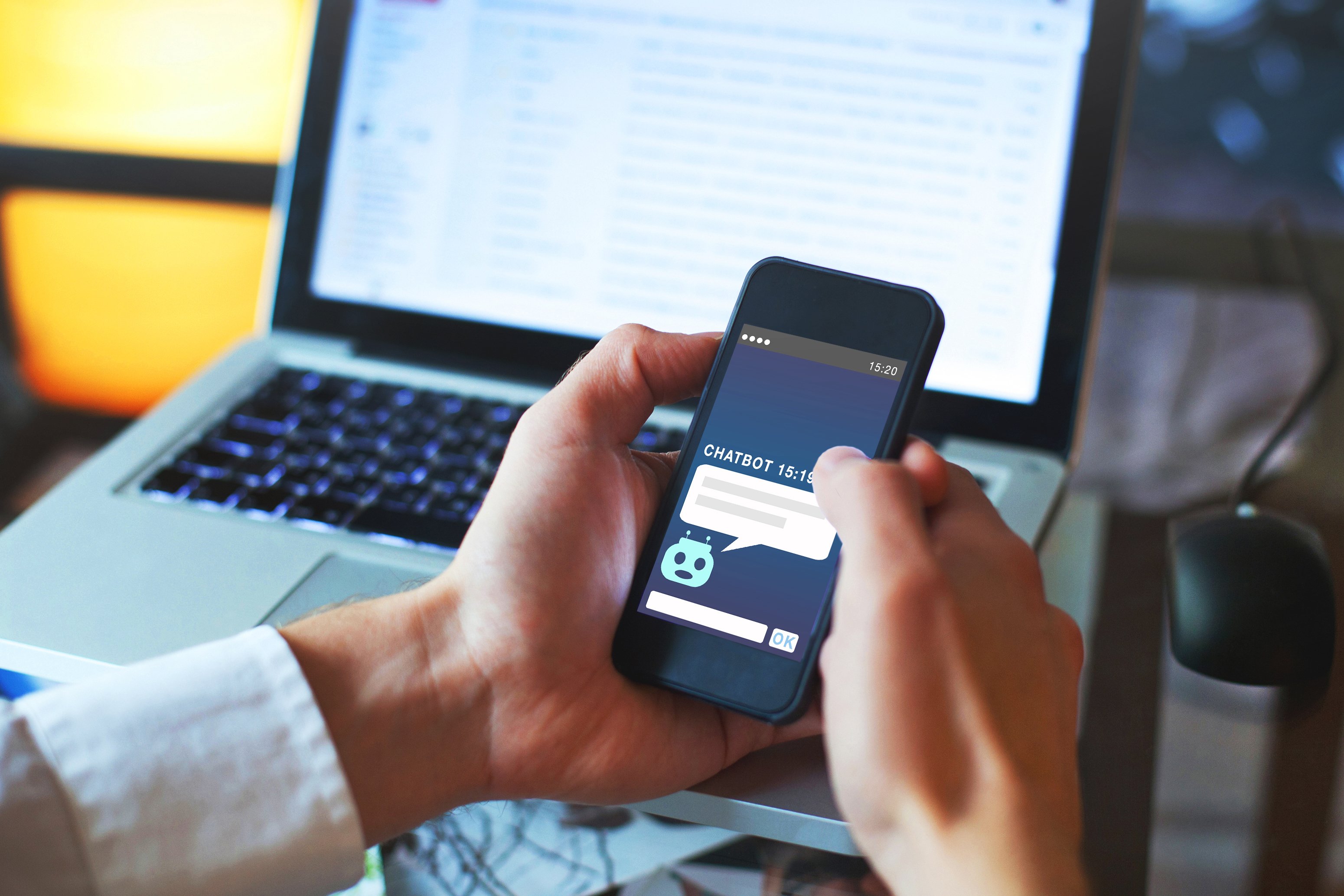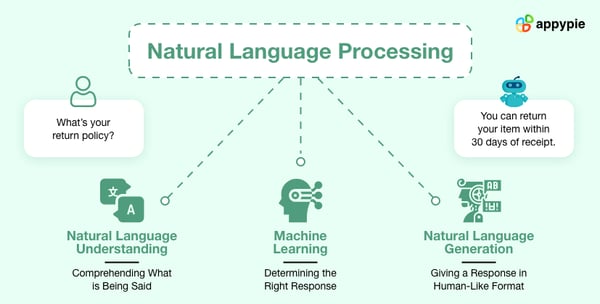October 28, 2020
 by Abhinav Girdhar / October 28, 2020
by Abhinav Girdhar / October 28, 2020

Chatbots are reshaping what customer support is supposed to be.
Chatbots are not a new concept. The concept of conversational bots is older than the very concept of the Internet itself. The first conversation bots were conceptualized back in the 1960s. The true potential of chatbots, however, is a recent discovery. With cloud computing and machine learning becoming the norm, chatbots have been consistently growing over the past decade.
Customer support is one of the fields where chatbots have found enormous success. Almost every business is slowly and steadily adopting chatbots for their support processes. This brings about a few interesting questions – and we’re here to answer them!
Responsive customer support is necessary for the success of a business. Many businesses around the world, both big and small, often overlook customer support. It is not uncommon for companies to have an understaffed support wing or skimp on customer support altogether. The simple reason why businesses continue to put customer support on the back burner is that customer support requires a hefty investment in resources and people.
This is where chatbots come in. Among the many uses that a chatbot can have, its application in customer support and service has been massively successful. In modern times, everyone from a Fortune 500 business to a local grocery store can create and deploy their own chatbots easily.
The shift towards chatbots can be credited to its many benefits over all the other forms of customer support. Here is a list of benefits that chatbots bring for your business:
Chatbots are completely automated and customer-centric. They are programmed to answer your customer questions as fast as possible. Apart from that, chatbots handle each customer with the same efficiency. It can go a long way in shaping consumer opinions about your business. Chatbots help bring consistency to your customer support that can help raise customer satisfaction. Chatbots can also be programmed to talk to customers in multiple languages helping your business serve a wider audience.
Chatbots can be deployed to work 24*7. Unlike people hired for customer support, chatbots can work tirelessly and be available whenever a customer wants. Once deployed, chatbots require minimum maintenance and they can be online whenever you need them to.
Chatbots have more usability than traditional customer support. They can also be used to bring in leads for your sales teams. Chatbots can be tailored to be consumer-facing sales bots that convert potential leads to customers. For example, on-demand delivery apps often use integrated chatbots for taking orders and processing payments.
Chatbots are cost-effective. Unlike other forms of customer support, chatbots consume fewer resources and are more affordable in the long run. A full-time support team can be quite expensive on a business’ coffers. A chatbot does not require office space, workstations, or monthly wages. Chatbots are a one-time investment for a business. Apart from minor tweaks, a chatbot is self-serving for its entire life cycle.
Artificial intelligence and machine learning are trending technologies. A chatbot can use both. Customers enjoy interacting with a chatbot. The engagement rates for chatbots are steadily increasing. In 2019, almost 40% of retail customers engaged with a chatbot. Chatbots can help position your brand as a ‘forerunner’ for the future. Chatbots assist in creating a good brand image.
Chatbots are not perfect as a technology. They do have certain disadvantages and drawbacks. Here are some of them.
All said and done, chatbots are automated machines. Some customers feel better dealing with a real person about their problems with a product or service. Chatbots may be frustrating for such users. While natural language processing (NLP) has helped in humanizing chatbots to a certain extent, we’re still far away from fluid language. Even the best AI chatbots in the industry are still not capable of holding completely natural conversations.
The more complex your use case, the harder it is to create a chatbot for your business. This is made worse by the fact that machine learning chatbots are even more challenging to create. Chatbots require a lot of time and effort to create. Chatbots usually take up a lot of server space too.
Thankfully, most businesses that use chatbots for customer support require simpler pattern-based chatbots that are a breeze to create. However, as technology evolves, chatbots will slowly become easier to create and deploy. It’s already in progress and a few brands allow users to create pattern chatbots without any coding required.
User queries and customer issues will rise in number as your business grows. Your chatbot needs to be up-to-date and should be able to provide information to customers readily on every doubt that they can possibly have. This means that you have to constantly maintain, update, and tweak your chatbot.
Chatbots are versatile tools and have multiple use-cases. Chatbots can be deployed in multiple places at the same time. Here is a list of places customer support chatbots are deployed by businesses.
Many businesses that have chatbots deploy them on their website homepage. It is easy to deploy a chatbot on a website’s home page. Visitors can ask their queries and get their doubts cleared immediately. A home page chatbot is a great application of support chatbots as it can be used to introduce potential customers to your brand, products, and services.
A business can deploy multiple chatbots on multiple website pages. Chatbots on important landing pages can help bring in leads for your business by assisting customers. They can either help the visitor understand your product/service or ask for information from them and then connect a visitor to a sales agent.
Some products have extensive user guides that can be a nightmare to browse through. Having a chatbot to ask for specific information or link to specific user manual pages can help enhance the customer experience.
Support chatbots can be deployed into your downloadable software to give instant assistance to the customers that have from within your software.
Chatbots can be deployed on mobile apps through a simple code. Customers can ask questions and get the answers right within the mobile app. Most mobile app chatbots can connect the user to a live agent if their problem is too complex.
Virtual assistants often have a chat-based interface depending on the use-case. Google Assistant, for example, takes both voice and text-based input to help answer user queries. Most virtual assistants follow the same developmental cycle as a chatbot and use NLP and machine learning to improve themselves.
Social media pages for businesses occasionally have a functional chatbot attached to them. This practice is especially popular on Facebook Messenger and WhatsApp with many big businesses adding business chatbots on their social media accounts.
Chatbots can be categorized in various ways. The simplest way to categorize chatbots is to divide them on the basis of the technology used to create the chatbot. There are three types of chatbots a business can create for its support process.
Pattern-based chatbots are the simplest chatbots you can create. These chatbots are the simplest types of chatbots that you can create for your business. Pattern-based chatbots have a preconfigured bot flow that they follow.
Most customer support chatbots are pattern-based since they are easy to make and deploy. A pattern-based chatbot proactively asks users what help they need and then directs the users to a relevant landing page or help article. The greatest drawback of pattern-based chatbots is that they lack flexibility and have limited usability.
Machine learning chatbots are the chatbots that use machine learning and NLP to create a better chatbot experience for the user. Machine learning chatbots are popular in healthcare support chatbots created by medical institutions to educate users on their various health problems. Machine learning chatbots are usually made for businesses with more complex use cases.
They are better than pattern-based chatbots and improve over time as they learn and store new information in their database. With the help of NLP, machine learning chatbots can be trained to recognize certain keywords and then direct users to the help they need. Machine learning chatbots are more difficult to create and maintain. It requires significant business investment, however, they are extremely good in the long run as they automatically improve their algorithm and get better with use.
Hybrid AI chatbots combine the best parts of both machine learning and pattern-based chatbots to create a contextual chatbot that can perform its functions based on user input. Hybrid AI chatbots are still a new concept. Virtual assistants such as Cortana, Siri, and Alexa are examples of hybrid AI chatbots.
Hybrid AI chatbots require the most investment to create. A lot of time, money, and resources are required to create and maintain hybrid AI bots. These chatbots use pattern-based algorithms that are flexible enough to incorporate machine-learning when needed. These chatbots are also known as contextual chatbots since they are programmed to understand a user’s context.
NLP is necessary if you are creating a machine learning support chatbot for your business. NLP is a combination of linguistics, artificial intelligence, and computer science. The purpose of NLP is to improve and naturalize interaction between a computer and a human.
The main objective of NLP is to read, decipher, understand, and make sense of human languages in a usable manner. Chatbots that use NLP take input from users and analyze their database to understand the tone, context, and meaning of the input and give a similarly appropriate output back to the user.
NLP is usually combined with machine learning to create computer programs that can converse with a human being naturally.

NLP in chatbots is used to improve communication and make the chatbot feel more natural. Users that use chatbots are likely to ask your chatbot questions that may not be solved with the help of simple responses. NLP helps you ‘train’ your chatbot for these instances and can help make it better.
The simple answer is it depends. The relevance of NLP in your chatbot is based on how it is built, what purpose will it fulfill and whether you have a customer base that will use it extensively. For example, adding NLP to a chatbot for your user guides is an overkill. It’ll make your help center better but that kind of functionality is not needed. However, an NLP chatbot that helps customers book, say, travel packages can be extremely helpful and is a worthy investment of NLP and machine learning technology.
If you’re building a chatbot from scratch, do consider it’s intent. Is your chatbot going to be full of button options or will it actively interact with users? Will your chatbot have a human personality? Will your chatbot ask users for raw input? If it is a button based chatbot, better to stick to a pattern-based bot.
Before you create your support chatbot, do keep in mind that your initial investment may be quite significant. Your chatbot should be able to provide a good enough return on that investment.Hybrid AI bots are for when you want to create a full-blown virtual assistant. Hybrid AI bots are still very new in the industry with only big organizations such as Google, Microsoft, etc creating and implementing them. For now, hybrid AI chatbots will definitely be an overkill for your organizations. Try to avoid it.
Various organizations have already started using a variety of chatbots for their support processes. Keeping that in mind, here are a few case studies of various industries using chatbots efficiently.
Amtrak has one of the most successful support chatbots of all time. The chatbot is named Julie and allows customers to book rail travel tickets by stating where and when they’d like to travel. The chatbot automatically fills forms for customers and provides customers guidance throughout the booking process. Apart from booking, Julie is capable of providing customers information about the places they’re visiting, giving hotel recommendations, and clarifying the simpler doubts a customer may have.
Within a year of its deployment, Julie helped over five million customers with their rail bookings while also providing customer support. Julie has helped Amtrak save over 1 million dollars in customer support expenses since its deployment.
Marriott launched its first chatbot in 2016. Deployed through Facebook Messenger, the chatbot was originally meant as a way for customers to combine and use their Marriott and Starwood reward cards. The original aim of the chatbot was to provide customers a frictionless experience.
However, the unprecedented success of the original bot compelled Marriott to develop it further. The bot currently can be used to redeem reward cards, book rooms, learn about travel destinations where Marriott resorts are located, and even look for job opportunities at various Marriott resorts around the world.
Bud Light approach to customer support chatbots was unique in its own way. While the chatbot is no longer online, it was an experimental chatbot launched on Facebook that would let customers get beer delivered to their homes. It was launched during the 2017 NFL season and ‘worked’ on match days.
The goal of the bot was to deliver beer to customers within an hour on match days. The bot was capable of sending reminders to users a few hours before match days. The bot was successful and had an engagement rate of nearly 75%.
GYANT provides healthcare chatbots/virtual assistants for hospitals and medical institutions. A basic GYANT bot can communicate with patients, ask them about the symptoms they are suffering from, and then send the details to the nearest doctors to diagnose and send prescriptions back to the patients. GYANT bots are also multilingual and can communicate with patients in English, Spanish, Portuguese, and German.
Chatbots are becoming more important with time. The industry experiences a consistent growth of around 26% every year. With more businesses adopting chatbots for their business processes, chatbots will just get better with time. This also means that chatbots will be used more creatively with time and newer more interesting applications of chatbots will be found.
Right now, chatbots are on their way to dominating the customer support and service industry. Within the next 10 years, chatbots will likely become the main form of customer support for major organizations. It’s a good time for businesses to jump on the bandwagon and create customer support chatbots for their own businesses. If more businesses start adopting chatbots, they will get easier to make and even more affordable than they currently are.
Founder and CEO of Appy Pie, Abhinav Girdhar has 12+ years of experience in the world of technological development and entrepreneurship. His areas of expertise are SEO, app trends, and innovations in AI and ML. He has a passion for fitness and gets his endorphin rush from a run and a strenuous gym session.
It’s no longer a secret that remote employees work more productively than office-based workers.
 by Harsh Vardhan
by Harsh Vardhan
"'Sorry for the delay, we're experiencing higher than usual volume..." If your customer support
 by Vishnu Prasad Selvaraj
by Vishnu Prasad Selvaraj
Imagine standing in a queue to order a burger, and by the time you reach the counter, the...
 by Gowri Ramkumar
by Gowri Ramkumar
It’s no longer a secret that remote employees work more productively than office-based workers.
 by Harsh Vardhan
by Harsh Vardhan
"'Sorry for the delay, we're experiencing higher than usual volume..." If your customer support
 by Vishnu Prasad Selvaraj
by Vishnu Prasad Selvaraj


